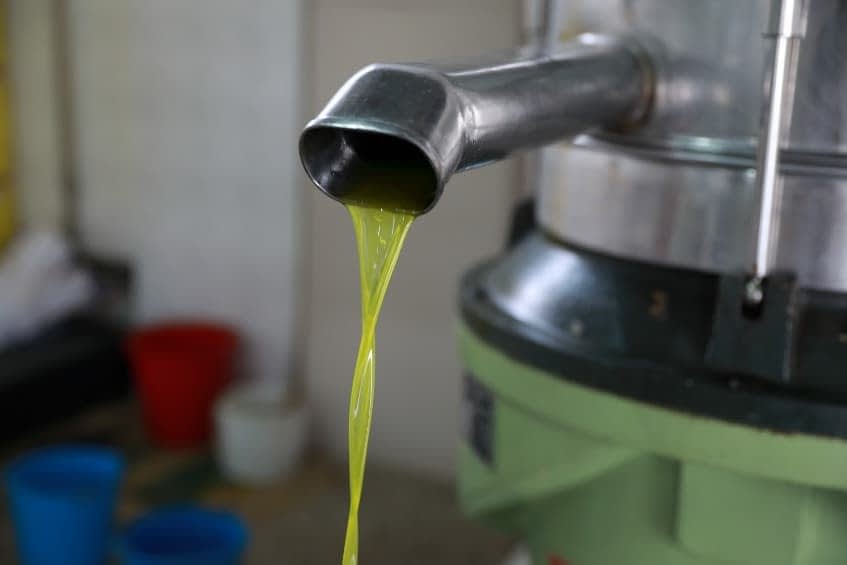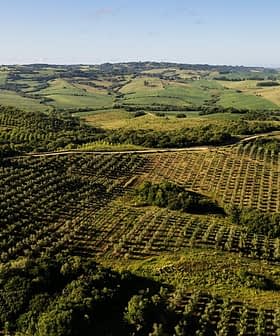 8K reads
8K readsGrades
The European Union’s new regulations regarding olive oil quality and labeling came into force at the end of November.
The two documents approved a few months ago and recently published in the Official Journal of the E.U. primarily integrate previous regulations to improve efficiency.
The European Commission explained that the need for a comprehensive update comes from “the experience acquired over the last decade [which] shows that certain aspects of the regulatory framework need to be simplified and clarified.”
See Also:New European Label Recognizes Health Benefits of High-Polyphenol EVOOsThe correct adoption of olive oil classification methods and the truthful labeling for olive oil are among the main items covered by the Delegated Regulation 2022/2104 and the Implementing Regulation 2022/2105.
As they introduced the regulation, the European Commission said compliance and conformity checks are necessary.
The commission noted how olive oil quality, explicitly regarding organoleptic and chemical profiles, set it apart from other vegetable and seed oils. It added that the product’s unique qualities make the need to prevent fraud especially poignant in the sector.
According to the commission, olive oil profiles must be analyzed using the protocols developed by the International Olive Council, of which the E.U. is a member. The IOC’s protocols require forming panels of selected and trained tasters.
“To ensure uniformity in the implementation, minimum requirements for the approval of panels should be set out,” the commission wrote. “In view of the difficulties that some member states encounter in setting up tasting panels, the use of panels in other member states should be authorized.”
Other crucial areas where the regulations integrate the previous rules include labeling. The commission’s goal is to mandate labels that are highly visible, easy to read and contain all the necessary information about the product’s contents.
The label should also inform consumers about the storage conditions of the product, as “numerous scientific studies have demonstrated that light and heat adversely affect the quality of olive oil.”
“The labeling regulations are meant to ensure that adequate and correct information on the product enables the consumer to choose,” Roberta Capecci and Roberto Ciancio, officials at the Italian central inspectorate of quality protection and fraud prevention of agri-food products (ICQRF), told Olive Oil Times.
“Sometimes markers use messages that attract the attention of the consumer, emphasizing product characteristics not covered by the… rules and which may not comply with E.U. and national provisions,” they added.
“Labeling, therefore, is the meeting point of two different needs: that of the producer, who wants to adequately promote his or her olive oil by differentiating it from others, and that of the consumers, who want to know exactly what they are buying,” Capecci and Ciancio continued.
Current European food safety regulations prohibit misleading information on labels regarding quality, production process or food origin.
“When it comes to the olive oil sector, the E.U. regulation… now implemented in regulation 2022/2014 provides for more specific rules related to olive oil origin, the procedures concerning the supply of certain mandatory details, the rules governing the optional particulars concerning the method of production, such as cold-pressed, extract/first pressing and for the chemical and organoleptic characteristics of the oil and the harvest year,” Capecci and Ciancio said.
The commission wrote that labels should always inform the consumer of the product’s origin, including whether it is a blend of olives or olive oils from different regions or countries.
If the olive harvest and olive transformation took place in different countries, that information would have to be mentioned on the label, with few exceptions.
“As a result of agricultural traditions and local extraction and blending practices, directly marketable virgin olive oils may be of quite different taste and quality depending on their place of origin,” the commission wrote.
“This may result in price differences within the same category that disturb the market,” it added. “There are no substantial differences linked to origin in other categories of edible olive oil, and so indicating the place of origin on the packaging of such oil may lead consumers to believe that quality differences do exist.”
The only highly-specific regional indications allowed on labels are related to PDO (Protected Designation of Origin) and PGI (Protected Geographical Indication) certifications. All other products must be labeled according to the country of origin, not its regions or provinces.
“When it comes to extra virgin olive oils, the origin is a mandatory indication,” Capecci and Ciancio said. “When an olive oil is identified on the label as Italian, it means that it has been produced in Italy only using Italian olives.”
Still, it is not unusual to find labels that only partially comply with the current regulations. In the ICQRF’s experience, this mostly happens when the indication of origin is involved.
“To promote their product, sometimes the producer includes not only the national origin of the oil but also the specific regional, provincial or municipal origin of the olives,” Capecci and Ciancio said.
“In such a case, the operator will be fined, and if the origin of those olives is found to be not the one stated on the labels, then the whole thing becomes fraud in the exercise of trade which belongs to the criminal sphere,” they added.
European labeling rules do not regulate the information about the cultivars used in olive oil production. However, a few countries have adopted their own rules about it.
“At a national level (in Italy), some specific regulations have been introduced,” Capecci and Ciancio said. “They ensure the information provided on the label be truthful.”
“[Such tools are] the outlining of the cultivars in the official business profile [of the farm] and the detailed traceability of the single lots of olive oil reported in the telematic register of oils,” they added.
In many countries where olive oil production is part of a long-standing family tradition, a significant percentage of the overall national yield is consumed at home. In many cases, families and small growers with a surplus of olive oil may sell it locally.
However, the current regulations prohibit this practice as all products on sale for consumers or restaurants must be packaged and labeled according to the new rules. This means that packaging operations must be conducted by a legally-sanctioned operator whose olive oil lots are reported in the national registry.
“Specific fines are currently provided for such violations, such as the €800 to €4,800 fine for the sale of olive oil packaged in containers that do not have an adequate closure locking system,” Capecci and Ciancio warned.
“As a matter of fact, European Union regulations and the national regulations about the olive oil sector define highly specific rules when it comes to labeling, with the aim of offering the consumers transparent and truthful information,” they added.
Other aspects covered by the new E.U. regulations include the “age of the product” declared on the labels.
“Operators should be allowed to indicate the harvest year on the label of extra virgin and virgin olive oils but only when 100 percent of the contents of the container come from a single harvesting year,” the commission wrote.
“Since the olive harvest usually begins during the autumn and ends by spring in the following year, it is appropriate to clarify how to label the harvesting year,” it added.
With an October 13th decision (2022/2103), the E.U. also announced the official position on the planned elimination of the “ordinary virgin olive oil” category by the IOC.
The E.U. will support the IOC’s decision to remove “ordinary virgin olive oil” as an official olive oil category, as it is already excluded by the previous E.U. rules and their most recent updates.
The previous IOC standard specified “ordinary virgin olive oil” as a virgin olive oil defined by the presence of oleic acid in no more than 3.3 grams per 100 grams.









